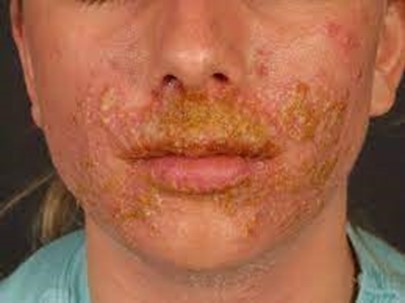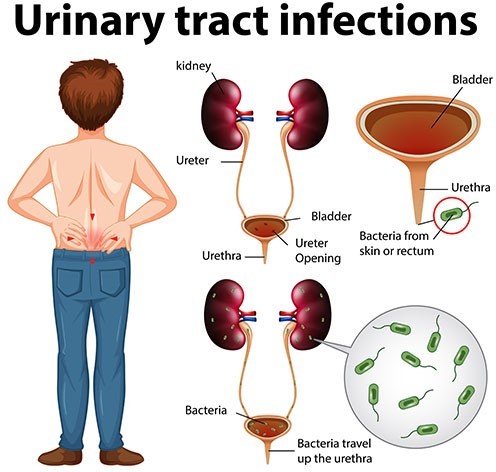A nurse is preparing to teach a parent how to care for a child who has impetigo contagiosa.
Which of the following information should the nurse plan to include in the teaching?
Keep the child on droplet precautions at home.
Wash clothing in hot water.
Immunize household contacts for the disease.
Give the child a chlorine bath twice daily.
The Correct Answer is B
This is an important measure to prevent the spreading of impetigo to others and to other parts of the body, as the bacteria can survive on clothing and other objects12.
Choice A.
Keeping the child on droplet precautions at home is incorrect, as impetigo is not spread by respiratory droplets, but by direct contact with the sores or contaminated items.
Choice C.
Immunizing household contacts for the disease is incorrect, as there is no vaccine for impetigo, which is caused by different types of bacteria.
Choice D.
Giving the child a chlorine bath twice daily is incorrect, as chlorine can irritate the skin and worsen impetigo.
The recommended treatment is to wash the sores with soap and water and
apply antibiotic ointment or cream23.
Therefore, choice B is the best answer to this question.

Nursing Test Bank
Naxlex Comprehensive Predictor Exams
Related Questions
Correct Answer is D
Explanation
Tinea pedis is a fungal infection that affects the skin on the feet and is commonly known as an athlete’s foot.
Choice A, Shingles, is incorrect because shingles are a viral infection that causes a
painful rash.
Choice B, Valley fever, is incorrect because valley fever is a fungal infection that affects the lungs.
Choice C, Fever blister, is incorrect because fever blisters are caused by the herpes simplex virus and typically appear on or around the lips.
Correct Answer is ["A","B","C","D","E"]
Explanation
The nurse should include all of these points in the teaching.
A. Avoiding bubble baths can help prevent irritation and infection.
B. Watching for manifestations of infection can help detect any worsening or recurrence of the infection.
C. Emptying the bladder completely with each void can help prevent urine from remaining in the bladder and causing infection.
D. Wiping the perineal area front to back can help prevent bacteria from
spreading to the urethra.
E. Wearing cotton underpants can help keep the area dry and reduce the risk of infection.

Whether you are a student looking to ace your exams or a practicing nurse seeking to enhance your expertise , our nursing education contents will empower you with the confidence and competence to make a difference in the lives of patients and become a respected leader in the healthcare field.
Visit Naxlex, invest in your future and unlock endless possibilities with our unparalleled nursing education contents today
Report Wrong Answer on the Current Question
Do you disagree with the answer? If yes, what is your expected answer? Explain.
Kindly be descriptive with the issue you are facing.
